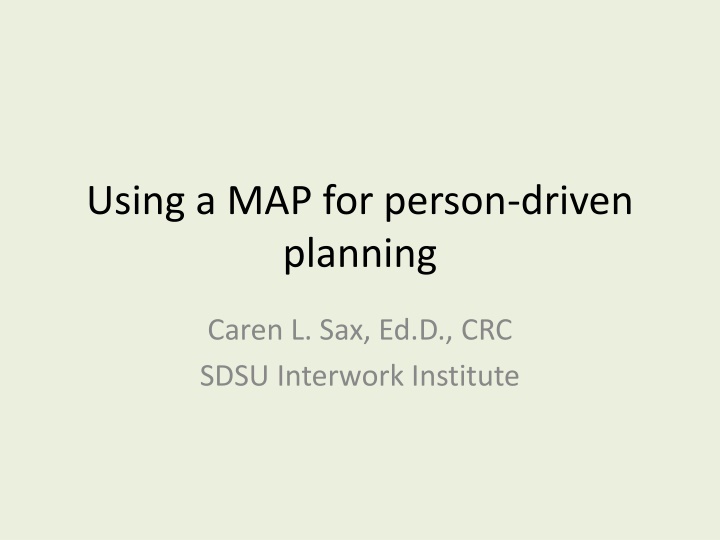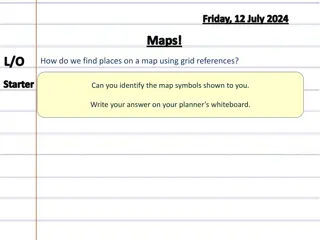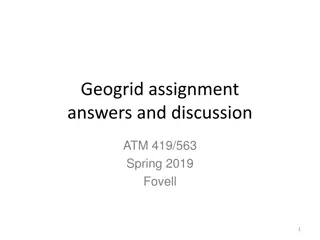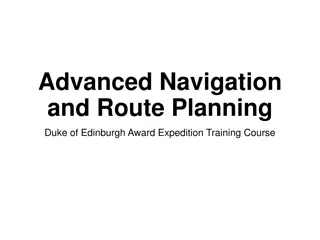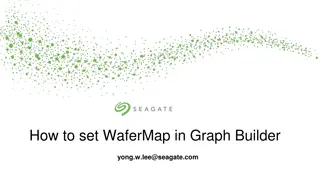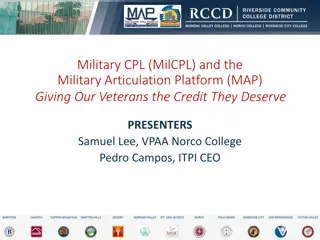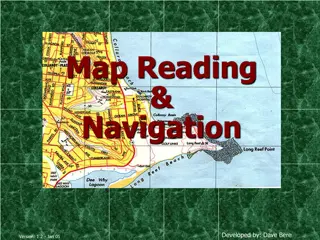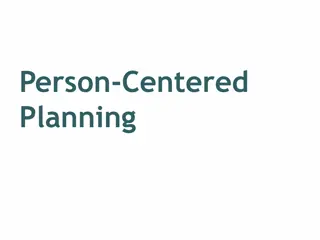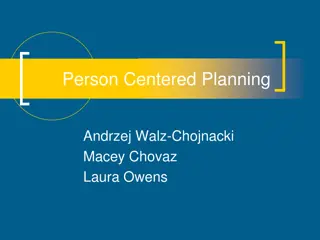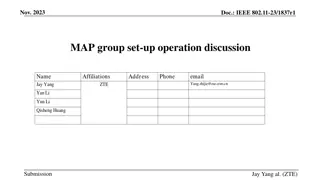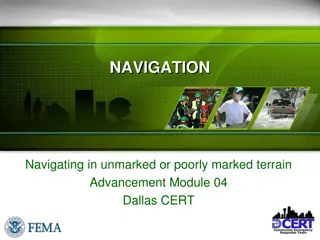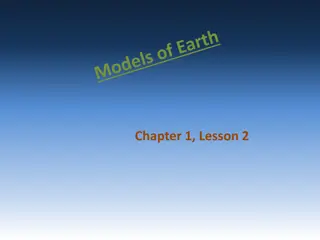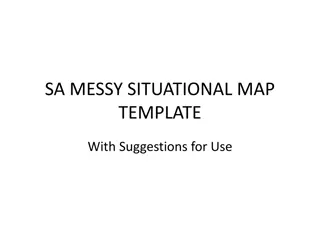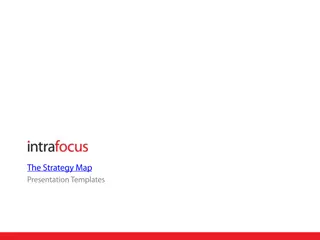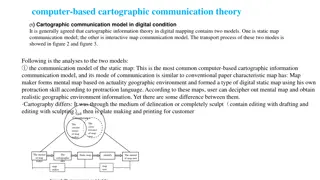Using a Map for Person-Driven Planning
A guide to person-driven planning through the use of a MAP (Making Action Plans). It emphasizes understanding history, celebrating achievements, exploring future dreams, and creating action steps. The process involves identifying strengths, interests, choices, and preferences to support individual needs effectively.
Download Presentation

Please find below an Image/Link to download the presentation.
The content on the website is provided AS IS for your information and personal use only. It may not be sold, licensed, or shared on other websites without obtaining consent from the author.If you encounter any issues during the download, it is possible that the publisher has removed the file from their server.
You are allowed to download the files provided on this website for personal or commercial use, subject to the condition that they are used lawfully. All files are the property of their respective owners.
The content on the website is provided AS IS for your information and personal use only. It may not be sold, licensed, or shared on other websites without obtaining consent from the author.
E N D
Presentation Transcript
Using a MAP for person-driven planning Caren L. Sax, Ed.D., CRC SDSU Interwork Institute
The Flow of the Plan Gathering history; how did we get here? Celebrate the little things; what are we learning? What s next? Dreams, visions for the future Nightmares, things that may get in the way Action plan who will do what? Strengths, interests, choice, preferences What does s/he want, need?
The Driving Questions 1. How do we describe people? Focus on gifts, capacities, dreams & desires 2. How do we think about and plan for the future? Plan a future rich with community life 3. Who makes the decisions; who is in control? Support personal & community decision making 4. What do we believe about community? Build community & accepting relationships 5. What do we believe about services? Adapt & change services
Setting up the frames - Participants: who s attending, who do they represent (friends, family, school, community, professionals) - History: how did the individual get to where she is today (highlights, milestones) - Places: where does she spend her time - Choices: which are made by her; which are made by others; which are joint decisions
More frames Preferences: things that work (motivating, interesting, bring happiness); things that don t work (boring, frustrating, upsetting) Dreams: (short or long term) in various life areas Action plan: who s going to do what, by when, who s going to follow up
Additional frames to consider Health considerations: depending on individual needs (what s working, what s necessary in medication, special care/equipment) Respect: positive qualities/behaviors that enhance respect; odd/unusual behaviors that might prevent individual from being respected
Julies first MAP The focus individual Participants
Her history Places she goes
Choices What s working/What s not
Dreams/goals Action plan
Follow up meetings WHAT S HAPPENING? IS IT OK? IF NOT, WHAT TO CHANGE? Living arrangements Work Recreation Social scene Other
